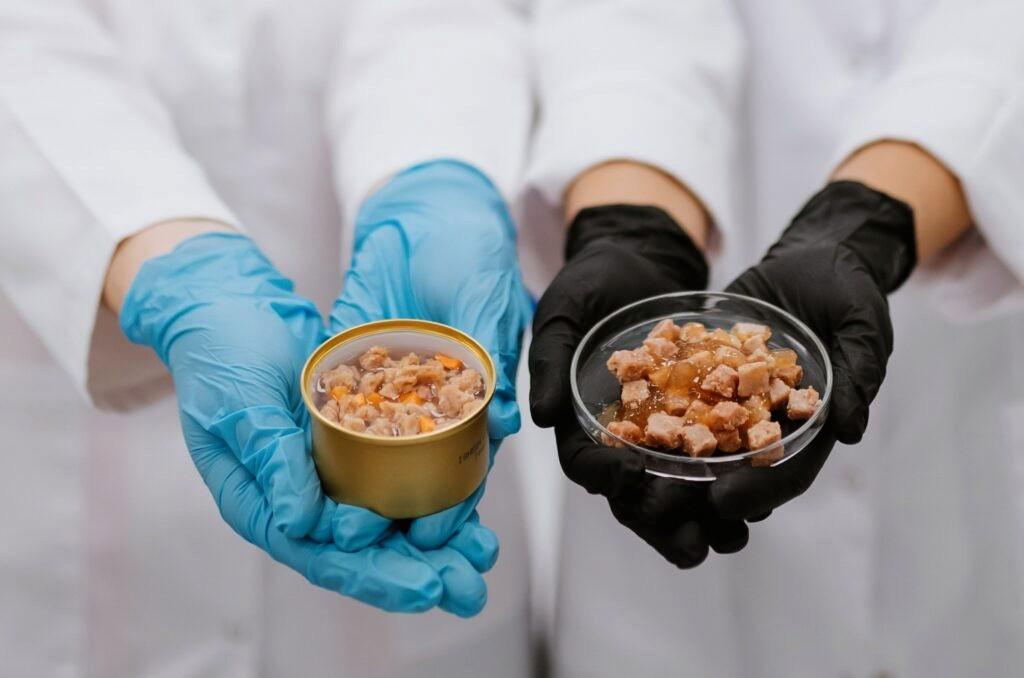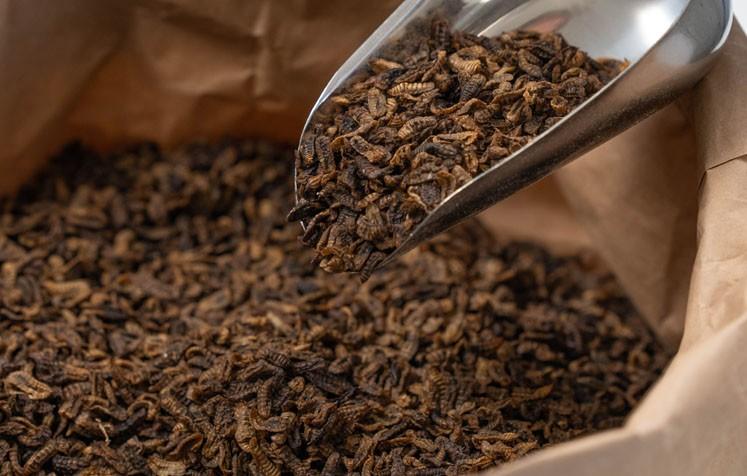Unlike farm animals, pet nutrition must follow a nutritional concept beyond the minimum and functional, remaining within the optimal range, according to Figure 1. However, this range allows many variations for each formulation, being able to cover a very wide diversity of diets, creating products with variations in ingredients and even nutrients, but which in the end achieve optimal health

Figure 1- Graph that represents the dose-response curve of nutrient consumption.
Based on the figure above, we can imagine where the products of the main commercial categories that exist today in pet food fit: economy, premium and super premium. Inexpensive rations present the nutrients on the optimal area curve, but closer to the minimum. Premium products, on the other hand, move further towards the highest point of the curve.
The super premium portions, meanwhile, are at the highest point of the graph without reaching the "excess" area. As the trend is always to develop superior quality products, the formulator must be aware of the balance between the great and the exaggerated of nutritional fashions so as not to reach excesses that compromise the health of dogs and cats.
Thus, the new trend is to satisfy the essential nutrient needs in an optimal way for each species and, together, to present products with functional and nutraceutical properties that promote beneficial effects on health, guaranteeing the customer the longevity of their pet.
We mention three points that the knowledgeable formulator must add to diets to achieve optimal nutrition:
1) INTESTINAL HEALTH
The gastrointestinal microbiota plays an important role in animal health. Prebiotics and probiotics are food additives capable of maintaining an adequate balance of the microbiota (Bielecka et al., 2002).
Several studies have shown beneficial effects on the health of dogs and cats, such as improvement in the consistency and smell of feces, regulation of the immune system, prevention and improvement in cases of diarrhea and anti-inflammatory and regulatory effects in the intestine in diseases of the gastrointestinal tract. (Vasconcelos et al., 2018).
Microorganisms used as probiotics are usually non-pathogenic components of the normal microbiota, such as lactic acid bacteria (major genera Lactococcus, Lactobacillus, Streptococcus, Bifidobacterium, and Enterococci). In general, the recommendation is to incorporate probiotics after extrusion of the food, due to the high temperature used in the process. However, we know that with the advancement of research and product development, probiotics for industrial use, capable of withstanding the heat of extrusion, are coming to the market.
Prebiotics, for their part, are non-digestible nutritional ingredients that act selectively on the microflora, stimulating the growth and activity of one or more beneficial intestinal bacteria (ANFALPET, 2010). They can be obtained naturally in the seeds and roots of some vegetables such as chicory, beets, artichokes, asparagus, barley, rye, soybeans, chickpeas and lupine. The most common forms available on the market are Saccharomyces cerevisiae cell walls or yeast cell walls or mannanoligosaccharides (MOS), which together with fructooligosaccharides (FOS), include inulin and oligofructose.
2) ANTIOXIDANT REINFORCEMENT
As with food, oxidation reactions also occur in the cells of living tissues. In this process, radicals with unpaired electrons are formed in the last layer that present intense chemical reactivity, forming so-called free radicals. They are normally produced to neutralize unwanted attacks on the body, such as bacteria and viruses, but when they are in excess and / or are not neutralized, they can often cause irrecoverable damage to membranes, DNA and enzymes (Borges et al., 2003).
Thus, the role of antioxidants in the diet came to have a broader connotation and, when they are present or incorporated in food, they can be effective in combating the formation of free radicals in animal tissues (Borges et al., 2003) .
The most widely used antioxidants have been alpha-tocopherol (vitamin E), beta-carotene (precursor of vitamin A), ascorbic acid (vitamin C) and polyphenols.
3) INFLAMMATION CONTROL
Fatty acids are capable of attenuating the effects of the inflammatory process by reducing the synthesis of eicosanoids and inflammatory cytokines.
The fatty acids linolenic acid (ALA), eicosapentaenoic acid (EPA) and docosahexaenoic acid (DHA) cannot be synthesized in sufficient quantities by the body, so they must be provided through the diet.
In some species, the fatty acids EPA and DHA can be synthesized from linolenic acid, but dogs and cats have a limited ability to carry out this conversion. Therefore, it is of the utmost importance that they are provided in the diet.
The profile of these fatty acids in a diet can be changed according to the source of fat provided: animal tissues, such as those of marine animals that feed on algae and have high concentrations of DHA in their tissues, while sources of plant origin have higher concentrations of ALA in its constitution. Fish oil, for example, is a great source of EPA and DHA.
BIBLIOGRAPHIC REFERENCES:
- ANFALPET - Manual do Programa Integrado de Qualidade Pet. 2010. 612p.
- BORGES, F. M. O., SALGARELLO, R. M., GURIAN, T. M. Recentes avanços na nutrição de cães e gatos. In: SIMPÓSIO SOBRE NUTRIÇÃO DE ANIMAIS DE ESTIMAÇÃO, 3, 2003 São Paulo. Anais... Campinas, p. 21-60, 2003.
- BIELECKA, M.; BIEDRZYCKA, E.; MAJKOWSKA, A. Selection of probiotics and prebiotics for synbiotics and confirmation of their in vivo effectiveness. Food Res. Int., Amsterdam, v.35, n.2/3, p.125-131, 2002
- GROSS, K. L.; YAMKA, R. M.; KHOO, C.; FRIESEN, K. G.; JEWELL, D. E.; SCHOENHERR, W. D.; DEBRAEKELEER, J.; ZICKER, S. C. Macronutrients. In:
- HAND, M. S.; THATCHER, C. D.; REMILLARD, R. L.; ROUDEBUSH, P.; NOVOTNY, B. J. (Ed.). Small Animal Clinical Nutrition. 5 ed. Topeka, EUA: Mark Moris Institute, 2010. p 49-105.
- VASCONCELOS, S. S. R. S. L.; Uso de probióticos manipulados e seus efeitos na saúde de cães e gatos: uma revisão de literatura. João Pessoa, 2018.
Source: All Pet Food
You could be interested: Pet food definition, according to categories
About author
Erika StasieniukErika Stasieniuk is a Zootechnician and Doctor in Nutrition and Feeding of Dogs and Cats at UFMG. She is a founding partner of SFA Consultoria, whose objective is to help food and ingredient companies for dogs and cats develop their products and produce safe and quality food.
Publisher Contents
Formulation




 5.0
5.0
20/11/2023














































